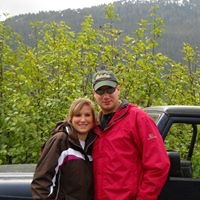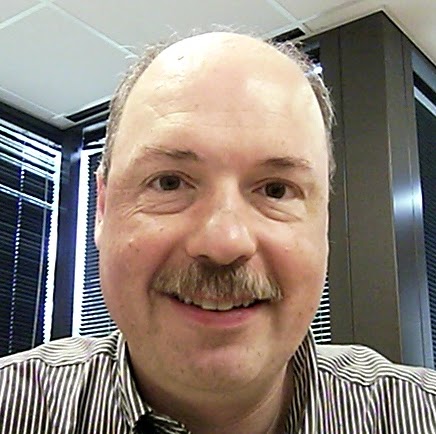John A Blasko
age ~62
from Grayslake, IL
- Also known as:
-
- John R Blasko
- Joan Blasko
- Elizabeth Blasko
- Joan Royston
John Blasko Phones & Addresses
- Grayslake, IL
- Hammond, IN
- 36236 Park Dr, Gurnee, IL 60031 • 8473565125
- Vernon Hills, IL
- Whiting, IN
- Saint Louis, MO
- Lane, IL
Isbn (Books And Publications)

The Prostate Cancer Treatment Book: Advice from Leading Prostate Experts from the Nation's Top Medical Institutions
view sourceAuthor
John C. Blasko
ISBN #
0071422560
Resumes

John Blasko
view source
John Blasko
view source
John Blasko
view source
John Blasko
view source
John Blasko
view source
John Blasko
view source
John Blasko
view source
John Blasko
view sourceName / Title
Company / Classification
Phones & Addresses
Treasurer
Whiting Columbian Club Inc
Social Association
Social Association
1120 119 St, Whiting, IN 46394
PO Box 777, Whiting, IN 46394
2196599837
PO Box 777, Whiting, IN 46394
2196599837
GLUESEAL, LLC
CHRISTIAN MISSIONARY CHURCH
Us Patents
-
Continuous Bulk Polymerization And Esterification Process
view source -
US Patent:6355727, Mar 12, 2002
-
Filed:Jul 2, 1999
-
Appl. No.:09/347035
-
Inventors:Kevin M. Andrist - Racine WI
John E. Blasko - Racine WI
Glenn C. Calhoun - Racine WI
Frederick C. Hansen - Union Grove WI
Dean R. Hellwig - Racine WI
Kurt A. Hessenius - Sturtevant WI
Steven M. Hurley - Racine WI
D. Sunil Jayasuriya - Racine WI
Matthew G. Lee - Boonville IN
Stephen J. Maccani - Racine WI
Gregory R. Peterson - Franksville WI
Paul E. Sandvick - Racine WI
Dennis M. Wilson - Kenosha WI
John P. Wiruth - Racine WI -
Assignee:S. C. Johnson Commercial Markets, Inc. - Sturtevant WI
-
International Classification:C08F 2004
-
US Classification:525 75, 5253301, 525384, 5263171, 5263181, 5263183, 526271, 523340, 523343
-
Abstract:A continuous bulk polymerization and esterification process includes continuously charging into a reaction zone at least one ethylenically unsaturated acid-functional monomer and at least one linear or branched chain alkanol having greater than 11 carbon atoms. The process includes including maintaining a flow rate through the reaction zone sufficient to provide an average residence time of less than 60 minutes and maintaining a temperature in the reaction zone sufficient to produce a polymeric product incorporating at least some of the alkanol as an ester of the polymerized ethylenically unsaturated acid-functional monomer. The polymeric product is used in various processes to produce water-based compositions including emulsions and dispersions such as oil emulsions, wax dispersions, pigment dispersions, surfactants and coatings which contain the polymeric product. A polymeric surfactant includes at least one ethylenically unsaturated acid-functional monomer which has been radically incorporated into the polymeric surfactant and at least one ester of the incorporated ethylenically unsaturated acid-functional monomer which has a linear or branched chain alkyl group with greater than 11 carbon atoms. The molar critical micelle concentration of the polymeric surfactant is less than 1.
-
Continuous Bulk Polymerization And Esterification Process And Compositions Including The Polymeric Product
view source -
US Patent:6858678, Feb 22, 2005
-
Filed:Oct 29, 2001
-
Appl. No.:10/013752
-
Inventors:Kevin M. Andrist - Racine WI, US
John E. Blasko - Racine WI, US
Glenn C. Calhoun - Racine WI, US
Frederick C. Hansen - Union Grove WI, US
Dean R. Hellwig - Racine WI, US
Kurt A. Hessenius - Sturtevant WI, US
Steven M. Hurley - Racine WI, US
D. Sunil Jayasuriya - Racine WI, US
Matthew G. Lee - Boonville IN, US
Stephen J. Maccani - Racine WI, US
Gregory R. Peterson - Franksville WI, US
Paul E. Sandvick - Racine WI, US
Dennis M. Wilson - Kenosha WI, US
John P. Wiruth - Racine WI, US -
Assignee:Johnson Polymer, LLC - Sturtevant WI
-
International Classification:C08F008/14
-
US Classification:5253301, 524560, 524561, 524562, 525384, 526 75, 526271, 5263171, 5263181, 5263183
-
Abstract:A continuous bulk polymerization and esterification process includes continuously charging into a reaction zone at least one ethylenically unsaturated acid-functional monomer and at least one linear or branched chain alkanol having greater than 11 carbon atoms. The process includes maintaining a flow rate through the reaction zone sufficient to provide an average residence time of less than 60 minutes and maintaining a temperature in the reaction zone sufficient to produce a polymeric product incorporating at least some of the alkanol as an ester of the polymerized ethylenically unsaturated acid-functional monomer. The polymeric product is used in various processes to produce water-based compositions including emulsions and dispersions such as oil emulsions, wax dispersions, pigment dispersions, surfactants and coatings which contain the polymeric product. A polymeric surfactant includes at least one ethylenically unsaturated acid-functional monomer which has been radically incorporated into the polymeric surfactant and at least one ester of the incorporated ethylenically unsaturated acid-functional monomer which has a linear or branched chain alkyl group with greater than 11 carbon atoms. The molar critical micelle concentration of the polymeric surfactant is less than 1.
-
System And Method For Recording Calls In An Ip-Based Communications System
view source -
US Patent:8553851, Oct 8, 2013
-
Filed:Jan 14, 2007
-
Appl. No.:11/623078
-
Inventors:Alan Weir - Libertyville IL, US
Randy Vyskocil - Buffalo Grove IL, US
Bhama Rao - Lake Barrington IL, US
Steven Greco - Round Lake IL, US
John Blasko - Gurnee IL, US -
Assignee:NEC Sphere Communications, Inc. - Linolnshire IL
-
International Classification:H04M 1/64
-
US Classification:379 70, 379 85, 379 87, 379 8819, 37911201, 379133
-
Abstract:A software solution to recording IP based communications that is highly scalable and reliable. Recordings can be configured to occur automatically or be triggered on-demand by a user that has been given the rights to do so. The user initiating the on-demand recording need not be a participant on the call. The solution is based on two server components: a call manager and a media server. The call manager is responsible for re-routing the IP media stream between two endpoints via the media server. The media server relays the IP media packets while capturing a copy that is stored as the recording. The recordings are stored on a network share and secured using standard network file security mechanisms. Access to playback recordings requires rights that are configured via the administrator. Playback of the recordings can be accomplished via the phone, client application or web service.
-
Continuous Bulk Polymerization And Esterification Process And Compositions
view source -
US Patent:20050059782, Mar 17, 2005
-
Filed:Oct 13, 2004
-
Appl. No.:10/964219
-
Inventors:Kevin Andrist - Racine WI, US
John Blasko - Racine WI, US
Glenn Calhoun - Racine WI, US
Frederick Hansen - Union Grove WI, US
Dean Hellwig - Racine WI, US
Kurt Hessenius - Sturtevant WI, US
Steven Hurley - Racine WI, US
D. Jayasuriya - Racine WI, US
Matthew Lee - Boonville IN, US
Stephen Maccani - Racine WI, US
H. Mills - Racine WI, US
Gregory Peterson - Franksville WI, US
Paul Sandvick - Racine WI, US
Dennis Wilson - Kenosha WI, US
John Wiruth - Racine WI, US -
International Classification:C08F008/14
-
US Classification:525330100, 525384000, 524560000, 524561000, 524562000, 526075000, 526271000, 526317100, 526318100, 526318300
-
Abstract:A continuous bulk polymerization and esterification process includes continuously charging into a reaction zone at least one ethylenically unsaturated acid-functional monomer and at least one linear or branched chain alkanol having greater than 11 carbon atoms. The process includes maintaining a flow rate through the reaction zone sufficient to provide an average residence time of less than 60 minutes and maintaining a temperature in the reaction zone sufficient to produce a polymeric product incorporating at least some of the alkanol as an ester of the polymerized ethylenically unsaturated acid-functional monomer. The polymeric product is used in various processes to produce water-based compositions including emulsions and dispersions such as oil emulsions, wax dispersions, pigment dispersions, surfactants and coatings which contain the polymeric product. A polymeric surfactant includes at least one ethylenically unsaturated acid-functional monomer which has been radically incorporated into the polymeric surfactant and at least one ester of the incorporated ethylenically unsaturated acid-functional monomer which has a linear or branched chain alkyl group with greater than 11 carbon atoms. The molar critical micelle concentration of the polymeric surfactant is less than 1.0×10moles/liter. Aqueous 2 percent solutions of certain polymeric surfactants have a surface tension of less than 45 mN/m at 30 C. and exhibit a decrease in surface tension of at least 5 mN/m as the temperature warms from 30 C. to 50 C.
-
Plasticized Aqueous Alkali-Soluble Resin Coating Compositions With Reduced Odor And Ph
view source -
US Patent:20060252878, Nov 9, 2006
-
Filed:May 9, 2005
-
Appl. No.:11/124760
-
Inventors:Jason Razdik - Kenosha WI, US
Russell Carlsen - Racine WI, US
John Blasko - Racine WI, US -
International Classification:C09D 5/02
-
US Classification:524556000
-
Abstract:This invention provides an alkali-soluble resin coating composition, more particularly an aqueous floor polish composition, comprising water, at least one alkali-soluble polymeric film forming agent, preferably solubilized in water using ammonia or an ammonia derivative, a polyvalent metal crosslinking agent, and a plasticizing agent, wherein the improvement comprises at least a portion of the plasticizing agent being formed of a weak carboxylic acid, such as a tertiary alkyl monocarboxylic acid, or an unsaturated primary carboxylic acid, each acid having an average of from about 6 to 30 carbon atoms per molecule, or combinations thereof. Such compositions have one or more improved properties such as greatly reduced ammonia odor as compared with the same compositions using only conventional plasticizers such as tributoxyethyl phosphate, reduced pH of the composition to increase ease of handling the composition, improved or equal coating film leveling, and improved gloss development and mark resistance with good self-sensitivity for less buildup upon recoating.
-
Method For The Synchronization Of Media Gateways In An Ip Network
view source -
US Patent:20070223464, Sep 27, 2007
-
Filed:Mar 23, 2007
-
Appl. No.:11/690223
-
Inventors:Alan Weir - Libertyville IL, US
Stephen Moore - Grayslake IL, US
Andrew McCartney - Libertyville IL, US
John Blasko - Gurnee IL, US -
International Classification:H04L 12/66
-
US Classification:370356
-
Abstract:A method of providing synchronization of the clocks of all of the media gateways of an Ethernet, or equivalent, IP network used in the transmission of audio data between media gateways using a clock provided by the PSTN. The selection of one of the media gateways connected to the PSTN, termed the master CoHub (Central Office Hub), is used as a clock master. This CoHub derives its clock from its TDM-interface's frame-synchronization with the PSTN to which it is connected. Utilizing this gateway-synchronization method, all MG's are synchronized to this PSTN clock-source.
-
Methods And Apparatus For Adjustment Of Blood Drip Chamber Of Dialysis Machines Using Touchscreen Interface
view source -
US Patent:58582398, Jan 12, 1999
-
Filed:Feb 14, 1997
-
Appl. No.:8/799227
-
Inventors:Rodney S. Kenley - Libertyville IL
Douglas L. Wilkerson - Gurnee IL
Joel DeJesus - Buffalo Grove IL
Tom L. Brose - Gurnee IL
Andrew Gebhardt - Lake Zurich IL
John A. Blasko - Gurnee IL -
Assignee:Aksys, Ltd. - Lincolnshire IL
-
International Classification:B01D 6132
B01D 6130 -
US Classification:210646
-
Abstract:A method for raising or lowering the fluid level in a chamber in an extracorporeal circuit of a dialysis machine, such as an air trap or compliance chamber, is provided which uses a touch screen. The user of the machine is prompted to indicate on the touch screen the current or actual level of fluid (e. g. , blood) in the drip chamber. The user then touches the touch screen to indicate the level, such as by touching an illustration of the chamber at a level corresponding to the actual level. The control system for the machine determines from the level indicated on the touch screen whether the level in the chamber needs to be raised or lowered, and by how much, and responsively operates chamber level adjustment apparatus (such as pressure adjustment apparatus in air communication with the chamber) to raise or lower the level closer to the proper level.
-
Method For Detection Of Leakage Of Blood
view source -
US Patent:56700504, Sep 23, 1997
-
Filed:Nov 17, 1995
-
Appl. No.:8/560335
-
Inventors:Tom L. Brose - Gurnee IL
John A. Blasko - Gurnee IL
Richard Faehnrich - Niles IL -
Assignee:Aksys, Ltd. - Lincolnshire IL
-
International Classification:B01D 6132
G01J 300 -
US Classification:210646
-
Abstract:A method for detecting the presence of blood in a dialysate solution is disclosed. The method provides for certain measurement of light intensity passing through solutions both before and during the dialysis session. Before dialysis is commenced, measurements are made of the intensity of light passing through a chamber containing a control dialysate solution that is free of blood. The light source is a first condition. The light source's state is changed from a first condition to a second condition different from the first condition. Next, a second measurement of the intensity of light is made. The first and second measurements are stored. During dialysis, the method continues with the following steps: conducting a third measurement of the intensity of light of the light source that passes though the chamber, the chamber containing dialysate solution that may contain the patient's blood, with the light source in the first condition. Next, the state of the light source is changed from the first condition to the second condition. A fourth measurement of the intensity of light passing through the solution is made.

John Blasko Salisbury MD
view sourceJohn Blasko (Salisbury, MD)

John Blasko Reading PA
view sourceFriends:
Tiffany Fry, Nicole Kotch, Matthew Truskey, Michael Weiss

John Blasko Kingst
view source
John Blasko
view source
John Blasko Salisbury MD
view sourceJohn Blasko (Salisbury, MD)

Search Names John Blasko
view sourceMyspace
Googleplus

John Blasko

John Blasko

John Blasko

John Blasko

John Blasko
Flickr
Youtube
Classmates

John Blasko
view sourceSchools:
Bella Vista Elementary School Sierra Vista AZ 1972-1979, Sierra Vista Middle School Sierra Vista AZ 1979-1981
Community:
Angela Garmon, Carrol Brackhahn, Sandy Wolfe

John Blasko
view sourceSchools:
Borromeo Seminary Wickliffe OH 1964-1968
Community:
Cal Tabernik, Patricia Kirner, Michael Gundling

John Blasko
view sourceSchools:
St. Jerome School Cleveland OH 1977-1984, St. Joseph High School Cleveland OH 1984-1988
Community:
William Schwentner

St. Jerome School, Clevel...
view sourceGraduates:
John Blasko (1977-1984),
Kevin Vanatta (1983-1991)
Kevin Vanatta (1983-1991)

Borromeo Seminary, Wickli...
view sourceGraduates:
John Patrick OBrien (1971-1975),
John Gareau (1954-1958),
William Jonke (1962-1966),
Clyde Foster (1963-1967),
John Blasko (1964-1968),
Frank Wardega (1964-1968)
John Gareau (1954-1958),
William Jonke (1962-1966),
Clyde Foster (1963-1967),
John Blasko (1964-1968),
Frank Wardega (1964-1968)

Bella Vista Elementary Sc...
view sourceGraduates:
John Blasko (1972-1979),
Craig Handy (1980-1987),
Kimberley Liggett (1981-1982),
Whitney Sonive (1981-1986),
Scott Cook (1974-1979)
Craig Handy (1980-1987),
Kimberley Liggett (1981-1982),
Whitney Sonive (1981-1986),
Scott Cook (1974-1979)

Phoenix College, Phoenix,...
view sourceGraduates:
John Blasko (1988-1989)

St. Joseph High School, C...
view sourceGraduates:
John Blasko (1984-1988),
Frank McGroarty (1974-1978),
Susan Kingston (1981-1985),
Brian Campbell (1985-1989),
Steve Varga (1976-1980),
Peter Schwerko (1957-1961)
Frank McGroarty (1974-1978),
Susan Kingston (1981-1985),
Brian Campbell (1985-1989),
Steve Varga (1976-1980),
Peter Schwerko (1957-1961)
Plaxo

John Blasko
view sourceDeMichele Group

John Blasko
view sourceNEC Sphere
Get Report for John A Blasko from Grayslake, IL, age ~62
















